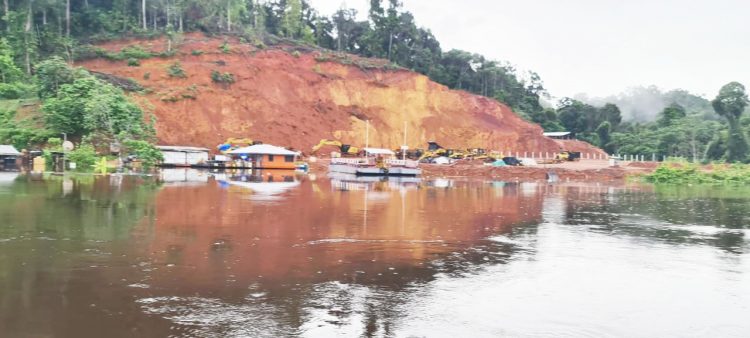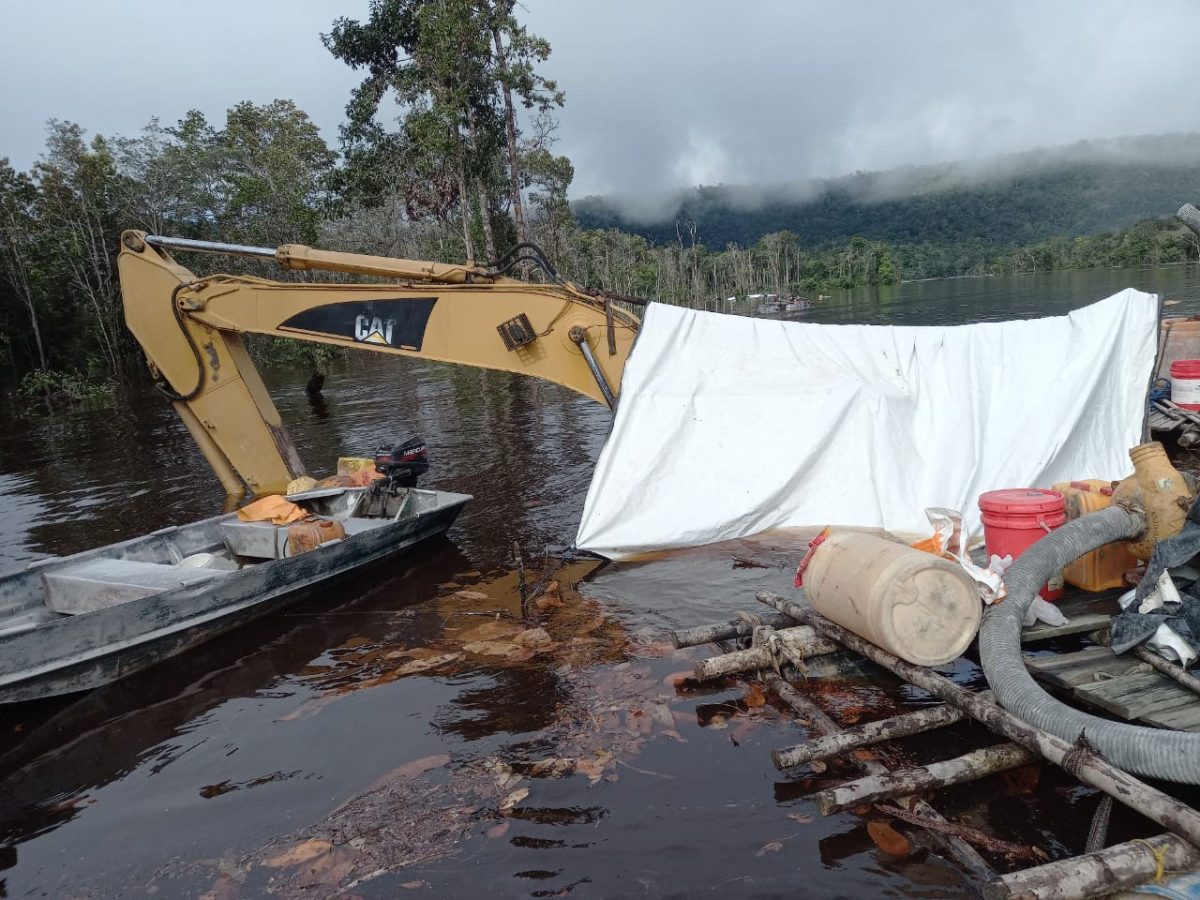With severe flooding in regions 1, 7, and 8 ravaging mining camps, the Guyana Women Miners Organisation (GWMO) is appealing to government to provide assistance to affected prospectors.
Hundreds of miners from the small and medium scale categories along with their workers have been displaced as a result of the flooding.
GWMO’s head Urica Primus yesterday said that weeks after miners were first affected by the flooding, they are reeling from the impacts.
The situation has forced many miners and workers to either return home or find new accommodation.

“It has become a situation where the camps have floated away or (are) covered by floodwaters and they have to seek new grounds. Many do not have a place to go and others have been trying to squeeze into camps that can accommodate them,” Donna Scott, a member of GWMO in Imbaimadai explained yesterday.
According to Scott, many persons are unable to visit their work sites to assess the damage as they do not have the resources to do so.
Primus yesterday said that many of the miners are worried about their livelihoods as they are unable to earn and in most instances have to meet financial obligations to banks.
“Many of them have debts and if you visit you will see that their excavators and machines, generators are ducked. We don’t know what they will be able to save but the cost of repairs will be high,” Primus said.
She added that her organisation has met with the Minister of Natural Resources Vickram Bharrat and registered the concerns of miners.
“We actually met with the Minister of Natural Resources (yesterday) and asked that some of the supplementary money government requested for flood relief be directed towards the miners,” Primus said before explaining that she also requested that her organisation be included on any task force set up to assess flooding in the mining regions.
Scott, who lives in Imbaimadai, Region Seven, said that when the flood arrived it swept away many things forcing miners and their workforce to save themselves.
“We had the rains for the entire month of May but this flood just catch everyone off guard. We know the area will be flooded but we never expect this. We never saw this at all. But before we got flood we had like 30 hours of heavy rain non-stop. When the water start coming everyone had to pick up what they can and move out,” she recalled.
The woman, who is not directly affected by the flooding, said electrical appliances from camps such as freezers, solar batteries, generators, televisions and other items were all destroyed.
“Everybody had to look for high grounds some people had to move to the landings because that was the only dry place. Nobody didn’t get to save anything,” she added.
Up to now, she said, some persons have not been able to return to their camps to assess the damage because you have to get boats to go back to the areas right now and the water is still high.
“This is an area (Imbaimadai) where we use bikes and vehicles all the time. They don’t have boats here so you might have to hire a boat just to go visit your camp,” she said as related that many persons do not have the finances to do so.
The Middle and Upper Mazaruni districts are severely affected by flooding with water levels more than 10 feet high.
From assessment by miners, they said the Mazaruni River rose to as much as 30 feet resulting in overtopping.
Region Seven Chairman Kenneth Williams has also expressed great concerns over the fact that villages in both the upper and lower Mazaruni continue to report “economic devastation” of their livelihoods and that the floodwater in most communities has not receded significantly. “As a matter of fact, some areas have experienced higher levels than yesterday (Sunday),” he said.
Communities like Waramadong, Kamarang and Kako, in the Upper Mazaruni, remain inundated and hundreds of farms are waterlogged as are dozens of homes but Quebenang and Jawalla are the two worst affected communities in the district.
President Irfaan Ali during his visit to the flood-hit region last Saturday said that initial estimates indicate that some 60 households have been affected and that approximately 169 farms were inundated. The flooding in the Akawaio community is one of the worst in decades.
“I am here personally to let you know that we understand your pain—we feel your pain. I want to commit to you, that you will get help and the Government will help the community and the farmers,” he said.
In the interim, he said that the focus would be on getting people to safe and secure locations and to ensure that they have food and other emergency supplies, a statement from the Office of the President said last week.
Residents who are concerned about water-borne diseases have requested mosquito nets, rain boots and water tanks, the CDC said on Sunday last.





